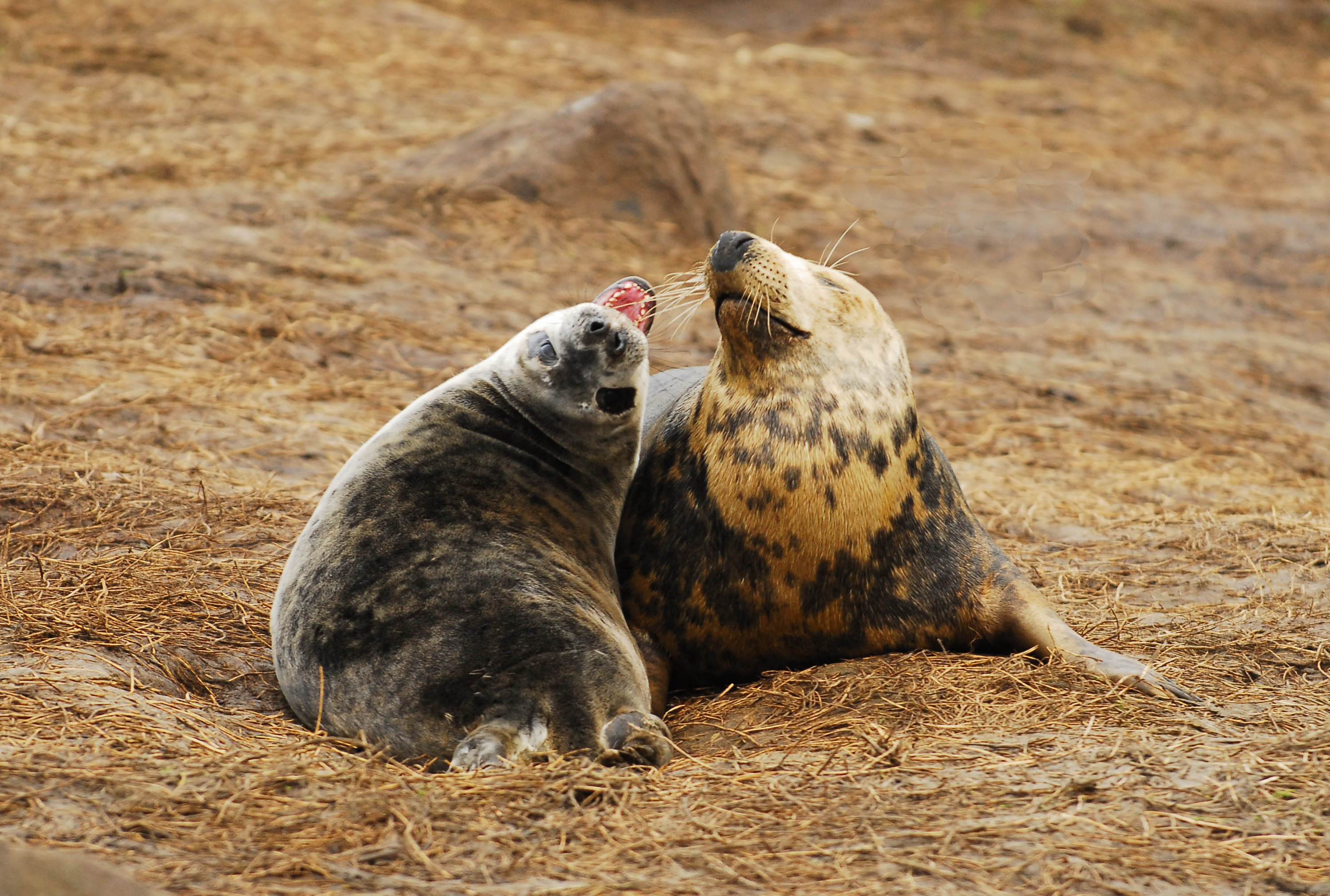
LOVE hormone injections can spread a little of what the world needs now between strangers, scientists have shown.
The experiment was conducted among wild grey seals given shots of the hormone oxytocin – known to forge emotional bonds between mothers and babies, and romantic partners.
Scientists found that after the jabs, newly introduced seals instantly hit it off, seeking out each other’s company and keeping physically close.
Levels of aggressive behaviour also dropped under the hormone’s influence.
Despite receiving small doses of oxytocin, the changed behaviour of the loved-up seals persisted for two days.
This was unexpected, since the hormone is quickly cleared from the bloodstream.
Study leader Dr Kelly Robinson, from the University of St Andrews, and her team wrote in the journal Proceedings of the Royal Society B: “Seals given oxytocin spent significantly more time in close proximity to each other, confirming that oxytocin causes conspecifics (same species members) to seek others out and remain close to one another.
“Aggressive and investigative behaviours also significantly fell after oxytocin manipulations.”
Twenty newly weaned grey seal pups from the Isle of May, Scotland, were captured by the researchers and placed in two holding pens.
Adult seals were not considered suitable for the study because of the likely possibility that they were already socially connected, and their large size and aggressiveness.
Pairs of seals from different pens were either given injections of oxytocin or salty water before being released back into the wild as their behaviour was observed.
The scientists concluded: “Oxytocin manipulations have been subject to intense interest in the last decade due to the widespread occurrence of oxytocin in mammals, its far-reaching effects on behaviour including parental and social bonds and the potential to use the hormone to treat human psychological conditions.
“Despite this, no study has confirmed that behavioural changes that occur in laboratory manipulations also occur in natural environments, and many administer doses of oxytocin far exceeding endogenous levels.
“We show that manipulation studies are possible in wild populations, and that manipulations are most powerful after prior work to identify naturally existing hormone-behaviour relationships.”
The research was conducted in a way that ensured no harm came to the seals, said the team.

Enjoy the convenience of having The Sunday Post delivered as a digital ePaper straight to your smartphone, tablet or computer.
Subscribe for only £5.49 a month and enjoy all the benefits of the printed paper as a digital replica.
Subscribe